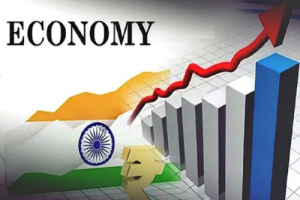India always had problems in dealing with spectrum. We wasted valuable wireless spectrum for fixed line services in 1995, unlike any other country, after the erroneous decision that expensive mobile phones were not for the poor Indians. The decision was reversed in 2004, but led to a lot of inspired criticism by mobile incumbents.
Earlier, the government approved a Convergence Bill in 2001, for more efficient use of spectrum, but was not approved. The government/regulator, therefore, approved a Unified Access License in 2004, reduction in interconnect charges and tariff forbearance. But, it took inefficiently long to bring in these changes (it had to be done in stages, by many regulatory efforts). Unified License reduced tariffs 50 times, but increased government revenues. Mobile numbers growth immediately increased 10 times, and gradually 200 times, three times ever the leader, China. 3G spectrum auctions were efficient later, though delayed, and showed the huge loss in 2G allocation and crony capitalism involved, the basis of the CAG report. The allocations led to litigation and differing and controversial judgments by the Supreme Court/CBI Court, the issue still remaining open, but this was one of the issues on which the UPA lost heavily to NDA, in the ultimate court of elections in 2014.
4G auctions were conducted efficiently, even though they were delayed, and now we have come to 5G auction issues, with an ET news item commenting, “India is set to miss the ”5G bus” following the lack of preparedness, unavailability of sufficient spectrum, absence of encouraging use cases, and uncertainty around radio waves sale for the next generation of telecom services.” This is despite India appointing A.J. Paulraj (winner of the Marconi Prize) Committee to give the recommendations to the steps required. They gave the report in mid-2018, and despite giving the schedule, we have not moved fast. In the past, Prime Minister Modi-led government maintained that it “won”t afford to miss 5G bus” like in the case of 2G, 3G, and 4G technologies that were deployed in India way later than many countries, thus losing the many early user advantages.
5G and India: Before we discuss, let us understand the nature of use of 5G. For a layman, 5G is just next generation wireless infrastructure which will provide them voice and data services. However, it will impact much more due to its bit-level intelligence characteristics. 5G will provide an array of network intelligence which will get translated into precise and demand-led resource allocation.
1G came in 1980s and provided basic voice services, 2G in 1990s and enabled voice and SMS services due to its digital standards, 3G came in 2000s and introduced data services along with voice and SMS that enabled multimedia services. 4G pure IP network, came in 2010s, and enabled the application services and partially merged the telecom and information technology which gave boom to platform services.
The architecture of 5G is designed to handle the connection of billions of devices including industrial machines with seamlessness and reliable data transfer with much faster speed. 5G is not only about high speed boost but it is about the intelligence at the bit level and low latency which will make it the foundational tech for multiple new tech., including self-driven cars, AR & VR, telemedicine, robotic surgery, powering future smart cities, IoT, m2m, AI and manufacturing. 5G will change the future war fighting too due to increased situational awareness to increase the command and control of the battlefield. Once these networks come, 2G and 3G networks can be abolished, like in other countries for better overall spectrum utilization. We have not started.
Industrial revolutions and change: It has been shown that industrial revolutions change the world. Hirschman had said that these revolutions occur every 70 years. This was proved in IR 1.0, 2.0 and 3.0. The US and the West”s GDP went up five to six times in IR 1.0 & 2.0, while India and China went down 10 times (colonial loot was also the reason).
Growth reversal with IR 3.0: But IR 3.0 changed the world with the technology being on a connected net and with globalization, available to the Third World (right from the beginning). Of course, the US helped China a lot post 1980, in technology dispersal, and helping China with accelerated WTO membership in 2001. This led to China growing eight times and India 2.5 times in a few years.
IR 4.0 and 5.0: The world is now moving to the fourth and the fifth industrial revolutions in quick succession. Providentially, these revolutions are also happening on the same wire or wireless lines as in IR 3.0, and we have bright Indian minds working in the digital sector like Nadella, Pichai, Arvind Kuar, Banga, Tata, Kohli, Nilekani, Narayana Murthy, Patni, Soota, Premji, and millions of others located in Silicon Valleys around the world. The most exciting additions to the list are Mukesh Ambani, Sunil Mittal and Kumar Mangalam Birla. They have kept the mobile sector alive despite crony capitalism, and given the appropriate ambience, should do very well now. Through them, and despite Covid, the world has shown confidence in the Indian economy.
China should do well because of enormous investment, past technology thefts, uninhibited US support till 2015, and R&D. The fifth IR will happen with IT getting connected to human minds (AI and beyond). IR 5.0 having reached the human mind, perhaps cannot move beyond, and the 6th IR has to be in another area, maybe the planets, as visualized by Jeff Bezos. Again, India is well-placed. Creating an appropriate environment is the key.
Role of private sector: It may also be recalled that the 2G rollout had created strong private sector companies and from 10 per cent private network, it had gone to 80 per cent (though the public sector had grown too). Later, despite crony capitalism, they had survived, and are today, India”s main hope to take us forward. With 5G networks being more powerful, they will surely impact GDP growth much more than the earlier generation networks and move the country towards Namo”s $5 trillion economy in 2024.
Fiscal pressure on the government - we can ill-afford to ignore: We are today also hit by Covid, huge bank NPAs, financial crisis, fiscal deficits and fall in investments. 5G rollout is an opportunity for huge network (and downstream) investments by existing private sector companies and their networks all over the country, without putting any fiscal deficit pressure on the government. I had, therefore, anticipated in my China book and articles, that the present is ”providence” for India, like it was ”providence” for China in the 80s with an imaginary ”cold war”.
Pricing Issues: A word about pricing here – our entire 2G revolution came after tariff forbearance, and liberal availability, connectivity and regulatory reforms. Obviously, once 5G revolutions get moving, the disruptions would be higher. Indian economy/GDP did well during IR 3.0, its DNA being more IT-centric, demonstrated by high growth in these sectors during some periods of IR 3.0, when regulations were right (2004 to 2010), particularly vis-a-vis China, and also the Indian minds being more IT-centric, demonstrated by the success of IT (software) and mobile revolutions.
World Digital Economy: In 2019, the world celebrated the first full year when more than half of the world (51.2 per cent, or 3.9 billion people) had begun to participate in the global digital economy by logging onto the internet, from almost zero a couple of years back. The world is turning fully digital, and networks converging very fast. China has touched 840 million subscriber base and will be 1 billion at the end of 2020, with superior speed, whereas India has only touched 600 million broadband subscribers.
The world will thus transform itself to a form that during IR 4.0 and 5.0 the versatile 4 and 5G networks will be more valuable than all other infrastructure, like roads, rail and air transportation systems etc. Looking at the future, China has created companies which are leading in 5G, AI, quantum computing and other digital products and shaping up the digital behaviour of the people because they are deploying networks faster and learning by doing it.
China is also leading in the standardization and patents of the digital ecosystem, manufacture of equipment etc. In contrast, the Indian 5G process is yet to commence (allocation of spectrum and installation of 5G equipment), though we have done extremely well despite late start in the past. India can grow in IR 4.0 given its human capital pool, the start in the use of algorithm prowess and an established IT hub, only if we install 4G and 5G systems adequately. But expensive and presently unviable (for India, since IR 4.0 and 5.0 industries and services have not started) 5G systems are likely to come in slow. Also, the spectrum and equipment prices are anticipated to be high. Unless both spectrum and equipment prices are low and heavily backloaded, I do not see India coming out of the jigsaw puzzle, and not falling back severely in the digital war. And if we miss India”s turnaround moment, India”s vast market and trained manpower will be used by advanced countries to develop 5G / IR4.0 and 5.0 networks fast. The Paulraj Committee recommended that 5G will mature between 2019 and 2024. India should take lead and become an innovator in 5G applications.
(Pradip Baijal is former Secretary, Disinvestment and former Chairman, TRAI. This article is in continuation of his book, Containing the China Onslaught, published by Quadrant, and available on amazon.in and walmart, and further to a review of China”s growth in Defensive Offence https://youtu.be/gFmRP3whXmU).

























Add Comment